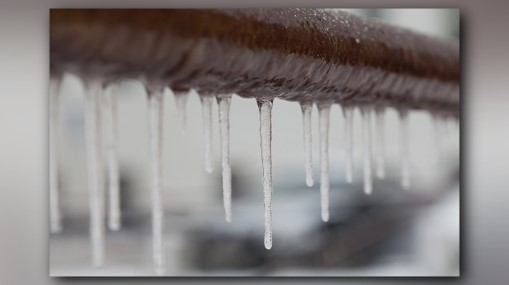Essential Tips to Avoid Frozen Pipes in Cold Weather: Professional Insights
Essential Tips to Avoid Frozen Pipes in Cold Weather: Professional Insights
Blog Article
What're your thoughts on How to Prevent Your Pipes From Freezing?

Winter can ruin your pipes, specifically by freezing pipelines. Below's how to prevent it from happening and what to do if it does.
Introduction
As temperature levels decrease, the danger of frozen pipelines boosts, potentially leading to expensive repair work and water damage. Recognizing just how to avoid frozen pipelines is vital for house owners in cold environments.
Prevention Tips
Insulating prone pipes
Cover pipes in insulation sleeves or make use of heat tape to shield them from freezing temperatures. Concentrate on pipes in unheated or outside locations of the home.
Heating methods
Maintain interior areas properly warmed, especially areas with plumbing. Open up closet doors to allow warm air to distribute around pipelines under sinks.
Just how to recognize icy pipes
Search for reduced water flow from faucets, uncommon smells or sounds from pipelines, and noticeable frost on subjected pipelines.
Long-Term Solutions
Structural modifications
Take into consideration rerouting pipelines far from outside wall surfaces or unheated areas. Add extra insulation to attics, cellars, and crawl spaces.
Updating insulation
Purchase premium insulation for pipes, attic rooms, and wall surfaces. Appropriate insulation helps keep constant temperatures and lowers the danger of frozen pipelines.
Safeguarding Exterior Plumbing
Yard hose pipes and exterior faucets
Separate and drain yard hoses prior to winter. Set up frost-proof spigots or cover exterior faucets with protected caps.
Recognizing Frozen Pipes
What creates pipelines to freeze?
Pipes ice up when revealed to temperature levels below 32 ° F (0 ° C) for prolonged periods. As water inside the pipelines ices up, it increases, taxing the pipeline wall surfaces and possibly causing them to burst.
Risks and damages
Frozen pipes can result in water system interruptions, property damages, and pricey fixings. Ruptured pipes can flood homes and create comprehensive architectural damages.
Signs of Frozen Pipes
Recognizing icy pipes early can avoid them from breaking.
What to Do If Your Pipelines Freeze
Immediate activities to take
If you suspect icy pipelines, maintain faucets open up to relieve stress as the ice melts. Make use of a hairdryer or towels soaked in warm water to thaw pipelines slowly.
Verdict
Avoiding icy pipes needs aggressive measures and quick actions. By understanding the causes, indicators, and preventive measures, homeowners can shield their plumbing throughout cold weather.
6 Proven Ways to Prevent Frozen Pipes and Protect Your Home
Disconnect and Drain Garden Hoses
Before winter arrives, start by disconnecting your garden hoses and draining any remaining water. Close the shut-off valves that supply outdoor hose bibs and leave the outdoor faucet open to allow any residual water to drain. For extra protection, consider using faucet covers throughout the colder months. It’s also important to drain water from any sprinkler supply lines following the manufacturer’s directions.
Insulate Exposed Pipes
Insulating your pipes is an effective way to prevent freezing. Pipe insulation is readily available at home improvement stores and is relatively inexpensive. Pay close attention to pipes in unheated areas such as the attic, basement, crawl spaces, or garage. Apply foam insulation generously to create a buffer against the cold. You can also wrap your pipes in heat tape or thermostat-controlled heat cables for added warmth.
Seal Air Leaks
Inspect your home for any cracks or openings that could let in cold air. Seal any holes around the piping in interior or exterior walls, as well as the sill plates where your home rests on its foundation. Additionally, make sure to keep your garage door closed unless you’re entering or exiting. Leaving it open creates a significant air leak that can lead to frozen pipes.
Allow Warm Air Circulation
During cold snaps, it’s essential to allow warm air to circulate evenly throughout your home. Leave interior doors ajar to promote better airflow. Open kitchen and bathroom cabinets to help distribute heat consistently around the rooms. If you have small children or pets, be sure to remove any household chemicals or potentially harmful cleaners from open cabinets for safety.
Let Faucets Drip
A small trickle of water can make a big difference in preventing ice formation inside your pipes. When temperatures drop significantly, start a drip of water from all faucets served by exposed pipes. This continuous flow helps prevent the water from freezing. Additionally, running a few faucets slightly can relieve pressure inside the pipes, reducing the chances of a rupture if the water inside does freeze.
https://choateshvac.com/6-proven-ways-to-prevent-frozen-pipes-and-protect-your-home/

We are very fascinated with Winter Plumbing Precautions: Preventing Frozen Pipes and I hope you appreciated my page. Sharing is caring. Helping others is fun. Thank you so much for going through it.
Click Here To Read More Report this page